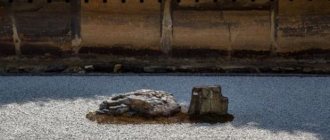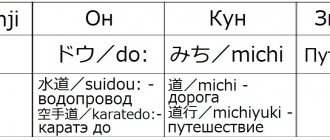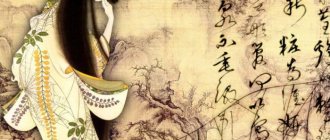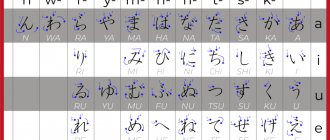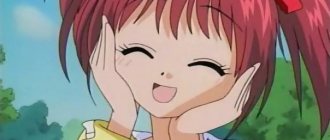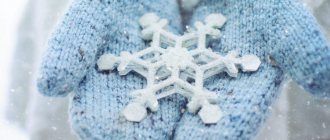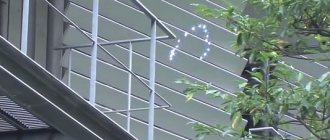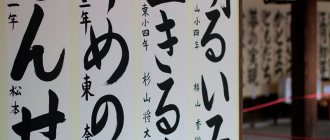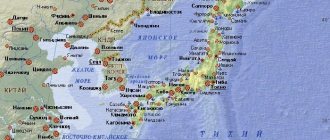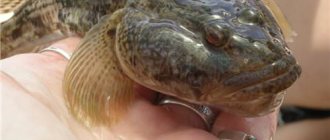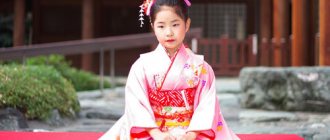Oh, how I want to go to the sea now, don’t I? Just imagine: gentle water rustles under your feet, and the moon and the first stars peek through the colorful sunset. A fairy tale, and nothing more. However, we already have a proven way to get at least a little closer to our dreams - to learn hieroglyphs with these meanings. Today in the program: “moon”, “star”, “sea” and “noise” .
For those who are with us for the first time, we tell you how to effectively learn hieroglyphs . The surest way is to make cards with them like flash cards. In any search engine, you can enter the query “spaced repetition method” and read in more detail. If we talk about this method briefly, then on a blank card on one side you write down one hieroglyph, on the other - everything you want to remember. For example, the standard set includes readings, meanings and several words in which this sign is used. You memorize the information on the resulting cards and begin to repeat it. Take a card, look at the hieroglyph and play out loud everything that is written on the back. In this way, repeat the signs first once a day, then, if you quickly and clearly name the readings, meanings and words, gradually increase the interval : once every two days, twice a week, once a week, etc. Actually, you use this principle to sort the cards into piles; in the end you should get several of them. When the hieroglyph is completely remembered, simply remove the card from the deck.
The best way to learn kanji is by writing them down. You can also repeat the writing of hieroglyphs, focusing on the back of the card , the one on which the readings are written, and so on. Don’t forget to say everything out loud – this way your brain remembers information better. And of course, reading is a must, even if you are new to the Japanese language.
"Moon"
The character 月 consists of only one element - “moon”, which is the key of character number 74 . You can search for the “kanji” key in a hieroglyphic dictionary.
Pay attention to the order of strokes when writing the sign:
The hieroglyph has the following readings :
Ony:ゲツ – (abbr.) Monday ガツ
Kun:つき – moon; month
The sign 月 in its ancient style is a pictogram depicting a crescent moon with a dot inside. Gradually, the “kanji” acquired its current spelling, and the dot in the middle turned into a horizontal line.
Words in which this hieroglyph is used:
| Word | Reading | Translation |
| 月曜日 | げつようび | Monday |
| 満月 | まんげつ | full moon; full moon |
| 正月 | しょうがつ | New Year; January |
| 月見 | つきみ | admiring the moon |
Star in Japanese
I will take this mini-horoscope from the old book “Stars and Fates”. I got it from my grandmother. By the way, I was surprised that she had this book, since my grandmother was a religious person and astrology did not fit in with religion for me. Anyway. What I mean is that if this information does not coincide with yours, I have nothing to do with it. Nevertheless, let's look at how the Japanese call the signs of the zodiac, planets, and what they have in common with the days of the week.
Aries - Hakuyokyu: - 白羊宮 (house of the white ram)
Planets: Mars (Kasei - 火星) Sun (Taiyo: - 太陽) Symbols: ram (hitsuji - 羊) deer (shika - 鹿) Stones: diamond (dayamondo - ダイヤモンド) ruby (ruby: - ルビー) amethyst (murasakizuisho: -紫水晶) bloodstone (kasseki - 血石) moonlight (getcho:seki - 月長石) emerald (ryokugyoku - 緑玉) Flowers: hawthorn (seiyo:-sanzashi - 西洋山樝子) violet (sumire - 菫) cornflower (yagurumagiku — 矢車菊) Metal: iron (tetsu - 鉄) steel (hagane - 鋼) Talisman: hammer (kanazuchi - 金槌) golden fleece (kin'yo: mo: - 金羊毛) Auspicious numbers: 4, 7, 9 (multiples of 9), 11 Lucky days: Tuesday (kayobi - 火曜日) Sunday (nichiyobi - 日曜日) Unlucky days: Friday (kin'yobi - 金曜日) Saturday (doyobi - 土曜日)
Taurus - Kingyukyu: - 金牛宮 (house of the golden ox)
Symbols: winged bull / winged cow (有翼の牛) Planets: Venus (Kinsei - 金星) Moon (Tsuki - 月) Stones: turquoise (torukodama - トルコ玉) sapphire (seigyoku - 青玉) agate (meno: - 瑪瑙) opal (tampakuseki - 蛋白石) emerald (ryokugyoku - 緑玉) jade (ko:gyoku - 硬玉) Flowers: lily of the valley (suzuran - 鈴蘭) lilac (murasakihashido - 紫丁香花) Metal: copper (aka - 銅) Talisman: owl (f ўkuro: —梟) golden calf (kingyu: - 金牛) Favorable numbers: 2, 4, multiples of 6, 16 Lucky days: Monday (getsuyo:bi - 月曜日) Friday (kin'yo:bi - 金曜日) Unlucky days: Tuesday (kayo:bi — 火曜日)
Gemini - Futagodza - 双子座 (constellation Gemini)
Symbols: Gemini, ( Futago -双子) agate (meno: - 瑪瑙) jade (ko:gyoku - 硬玉) emerald (ryokugyoku - 緑玉) Flowers: daisies (hinagiku - 雛菊) poppy (keshi - 芥子) jasmine (jasumin - ジャスミン) daffodil (su ysen - 水仙) Metal: gold (kin - 金) silver (gin - 銀) Talisman: snake (ja - 蛇) mask (kamen - 仮面) Favorable numbers: 3, 5, 12, 18 Lucky days: Wednesday (suyo:bi - 水曜日) Sunday (nichiyo :bi - 日曜日) Unlucky days: Thursday (mokuyo:bi - 木曜日)
Cancer - Kyoukaikyu: - 巨蟹宮 (house of the giant cancer); Kaniza - 蟹座 (Cancer constellation)
Symbols: cancer (kani - 蟹) crab (kani - 蟹) heart (Shinzo: - 心臓) Planets: Moon (Tsuki - 月) Stones: lunar (getcho:seki - 月長石) emerald (ryokugyoku - 緑玉) ruby (ruby: - ルビー) Flowers: honeysuckle (suikazura - 忍冬) water lilies (suiren - 睡蓮) all white flowers (全ての白い花) jasmine (jasumin - ジャスミン) Metal: silver (gin - 銀) Talisman: clover (kuro:ba - クローバー) heart (Shinzo: - 心臓) Favorable numbers: 2 and multiples of 2, 4, 5, 8 Lucky days: Monday (getsuyo:bi - 月曜日) Thursday (mokuyo:bi - 木曜日) Unlucky days: Tuesday (kayo:bi - 火曜日) Saturday (doyo:bi - 土曜日)
Leo - Shishiza - 獅子座 (Leo constellation)
Symbols: lion (shishi - 獅子) swan (hakyo: - 白鳥) Planets: Sun (Taiyo: - 太陽) Stones: amber (kohaku - 琥珀) topaz (ko:gyoku - 黄玉) ruby (ruby: - ルビー) onyx (shimameno : - 縞瑪瑙) diamond (dayamondo - ダイヤモンド) emerald (ryokugyoku - 緑玉) Flowers: peonies (hatsukagusa - 二十日草) gladioli (to:sho:bu - 唐菖蒲) chrysanthemums (kiku -菊) Metal: gold (kin - 金) Talisman: ladybug (tento:mushi - 天道虫) lion (shishi - 獅子) eagle (washi - 鷲) Favorable numbers: 1, 5, 9, 11 Lucky days: Sunday (nichiyo:bi - 日曜日) Unlucky days: Saturday (doyobi - 土曜日)
"Star"
The character 星 can be divided into two elements - “sun” 日 at the top and “live” 生 at the bottom. The element “sun” is the key – key number 72 .
They:セイショウ
Kun:ほし – star; spot, speck; mark, asterisk; target center
The ancient hieroglyph depicted a tree with stars shining through its branches. This "tree", now the 生 element, was a phonetic and was responsible for the reading equivalent to the Japanese "sei". To better remember the sign, we offer the following mnemonic rule : “stars” 星 are what are “born” 生 after the “sun” 日 sets.
| Word | Reading | Translation |
| 星座 | せいざ | constellation |
| 衛星 | えいせい | satellite |
| 水星 | すいせい | Mercury (see other planets in the dictionary) |
| 北極星 | ほっきょくせい | polar Star |
What are the names of the planets of the solar system in Japanese?
Since ancient times, celestial bodies have attracted people not only with their mysterious radiance, but also with the ability to predict a person’s fate. Of course, not everyone believes in horoscopes and astrology, but it is impossible to deny the influence of other planets on our history. Therefore, today we will talk about how and why the familiar planets are called that way in Japanese.
A planet is a huge celestial body that revolves around its star.
In Japanese, a planet is 惑星 ( wakusei
) “confused star” or “confused star.” An interesting combination that promises us no less interesting planet names.
The answer to the question about the names of the planets should be sought in Ancient China, because it was from there that kanji, or otherwise hieroglyphs, and, accordingly, most names and concepts came to Japan. This process did not bypass celestial bodies either. In Ancient China, only five (with the exception of Earth) planets were known: Mercury, Venus, Mars, Jupiter, Saturn. This is due to the fact that these particular celestial bodies are clearly visible to the naked eye, of course, if you understand where and when to look.
At first they were given complex and not particularly well-established names. However, some time later, these five planets, in accordance with the Chinese system of the five elements of nature, were assigned their own elements: water, metal, fire, wood, earth. From that moment on, they got new names. The first hieroglyph in them denoted the element governed by the planet, and the second indicated that these were stars, because at that time the concepts of “planet” and “star” were not yet fully distinguished.
Mercury: 水星, すいせい ( suisei
) "water star"
Venus: 金星, きんせい ( kinsei
) "metal star"
Mars: 火星, かせい ( kasei
) "star of fire"
Jupiter: 木星, もくせい ( mokusei
) "tree star"
Saturn: 土星, どせい ( dosei
) "earth star"
It is worth noting here that the names were distributed almost randomly - this means that there is no actual connection to the hieroglyphs. But how can you remember all the planets? Here are some little tips for you:
Mercury is too close to the Sun, which means there is no WATER on it
Venus is distinguished by its GOLD color, and the second meaning of the sign 金 is gold
Mars is bright red, namely FIRE
You will have to use your imagination with the following comrades:
A huge and lush FOREST grows on Jupiter
Saturn is a huge desert, which means you can walk on it like on EARTH.
Another fact is that the Earth in Japanese is written without the character 星 “star”, namely: 地球 ( chikyu:
), which means "Earth globe".
"Sea"
The hieroglyph 海 consists of two parts : on the left is “water” 水 in a truncated form, and on the right is the conventional hieroglyph “everyone” 毎, which is divided into two elements – on top “man” 人 and below “mother” 母. The key of the hieroglyph is the element “water” – key number 85 .
Him: カイ
Kun: うみ – sea
The right side of the hieroglyph acted as a phonetic and meant “darkness, unknown.” Thus, the sea is dark and unknown waters to man, which are fraught with danger. If you think about it, you can come up with another mnemonic rule : sooner or later, “all” 毎 “water” 水 ends up in the “sea” 海.
| Word | Reading | Translation |
| 海岸 | かいがん | [sea] shore, coast |
| 海洋 | かいよう | sea ocean |
| 日本海 | にほんかい | Japanese Sea |
| 海鳴り | うみなり | sound of the sea |
"Noise"
The character 騒 is conventionally divided into two parts . On the left is “horse”, which is key number 187 , and on the right is “again” on top 又 and “insect” on bottom 虫.
Him:ソウ
Kuns:さわ(ぐ) – make noise, make noise; worry; fuss さわ(ぎ) – noise; hype さわ(がす) – to alarm, excite さわ(がせる) – the same さわ(がれる) – to enjoy success さわ(がしい) – noisy; restless
We offer you another mnemonic rule : when the “insect” 虫 “again” 又 bites the “horse” 馬, it becomes “noisy” 騒.
| Word | Reading | Translation |
| 騒動 | そうどう | unrest, unrest, upheaval; quarrel, discord; riot |
| 物騒 | ぶっそう | +な restless, anxious; unreliable, dubious, dangerous |
| 騒音 | そうおん | noise |
| 騒乱 | そうらん | unrest, unrest, upheaval |
Our website has already accumulated a decent number of articles on hieroglyphics . If you haven't seen them yet, be sure to read them whenever you have a free minute.
Japanese characters: "peace", "tranquility", "harmony"
Japanese characters: “day”, “night”, “light”, “darkness”
Japanese characters: “horse”, “fox”, “elephant”
Japanese characters: "man", "woman", "child", "children", "school"
Japanese elemental hieroglyphs: hieroglyphs fire and water, earth and air. Japanese characters for tattoos
Beautiful Japanese characters - warrior, strength, dragon, samurai. Japanese characters for tattoos
Japanese characters. Japanese character for "luck", Japanese character for "happiness", Japanese character for "love", "health"
Was this kanji analysis helpful to you? We hope that you will not stop there and continue to get acquainted with hieroglyphs. Good luck in learning Japanese!
Japanese characters: “moon”, “star”, “sea”, “noise” - we learn with you on our website! Readings, spellings, meanings and words.
A selection about celestial bodies and the starry sky in Japanese
This collection was created based on the releases of thematic posts on the VK public page, in other words, this is a collection about celestial bodies and the starry sky. ... And a little more about what the moon is called at different periods of its visibility
Stars and stellar phenomena
星の空(ほしのそら)- starry sky or also 星空(ほしぞら)
夜空(よぞら) – night sky
夜天 (やてん) – and another name for the night sky
明星(みょうじょう・あかぼし) - bright star, luminary
星影(ほしかげ) – although the kanji for “shadow” (影) appears in this expression, the term means starlight, and is often used with the kanji for night (夜): 星影さやかな夜 (ほしかげさやかなよる)- night , in which you can see the clear sky and the bright light of the stars
良夜 (りょうや) – a night on which the moonlight is clearly visible
晴夜 (せいや) – a night in which there are no clouds in the sky and the stars are clearly visible
流星の夜(りゅうせいのよる)- night on which a shower of meteors is visible
流れ星(ながれぼし)- shooting star
天の川(あまのがわ)- milky way
朧月夜(おぼろづきよ) – Night of the pale moon in the haze (a separate post on 朧) has already been published
星月夜(ほしづきよ・ほしづくよ) – a night on which both the stars and the Moon are visible
星供養(ほしくよう) – holiday of stars
About the Moon
新月(しんげつ) – new month, or also called 朔(さく)
三日月(みかづき) – the third lunar day, also called:
上弦の月 (also 半月(はんげつ))
On the 9th lunar day
And on the 13th lunar day 十三夜(じゅうさんや)
The 14th day falls almost on the full moon. Thus the Moon is called 小望月(こもちづき)
満月(まんげつ) – 15th day and full moon, which is also called 満月 (まんげつ), or 望月 (もちずく)
16th lunar day 十六夜(いざよい),
The 17th day can also be called 立待月(たちまちづき)
The 19th was given the name 寝待月 (ねまちづき) - waning, sleeping moon
20m is allocated to the “name” 更待月(ふけまちづき), the moon for which the dark time begins, the waning moon
The 23rd day was given the name 下弦の月 (かげんのつき)last quarter of the Moon
on the 26th day the Moon is called 有明の月 (ありあけづき) – verbatim. Moon sunset
on the 30th – 三十日月(みそかづき) – みそか – always the name of the third number. Well, those who follow posts in Tokado know that おおみそか is December 31, New Year, or rather its eve
Well, here’s another expression that the author learned at the very beginning of studying the Japanese language: 月の兎が仙薬を作る (つきのうさぎせんやくをつくる)- The moon rabbit on the moon poundes in a mortar and makes a miracle cure.
In Asia, particularly Japan, and also among the Aztec tribes, spots on the moon looked like rabbits. This is where the expression 月の兎 (つきのうさぎ)ー Moon rabbit, moon hare) comes from
And a little more about the color perceptions of the Moon
青月 (せいげつ) or 青白い月 – Blue Moon
Red Moon
白い月 (しろいつき) or 白月 (はくげつ) – white Moon
黄金の月 (おんごんのつき)- Golden Color Moon
銀色の月 (ぎんいろのつき)- Silver Moon
If you find an error, please select a piece of text and press Ctrl+Enter.
Source
